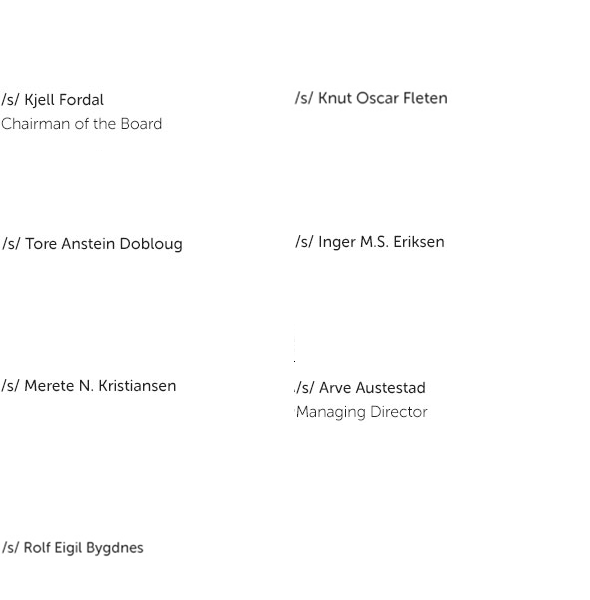Boligkreditt 2nd Quarterly Report 2018
Statement of the board of directors
Cover pool and outstanding covered bonds 1
Boligkreditt’s cover pool consists of residential mortgages and liquid, highly rated liquid assets as well as derivatives hedging liabilities in a foreign currency and/or at fixed rates. The chart below illustrates the balances recorded on the balance sheet as of June 30, 2018:
The amount of liquid assets varies over time and the variation is solely a result of the Issuer’s liquidity risk management (and regulatory requirements), whereby upcoming redemptions are refinanced early (up to 12 months) with proceeds held as liquid assets (please see the investor reports for details on the composition of liquid assets). The chart below describes the mortgages in the cover pool in more detail.
1 The source is the balance sheet figures as of 30 June 2018 and the cover pool asset liability test for overcollateralization (see notes to the financial statements)
Key figures cover pool 2
| Q2 2018 | Q1 2018 | Q4 2017 | Q3 2017 | Q2 2017 | |
|---|---|---|---|---|---|
| Weighted Average Current LTV (%) | 51.3 % | 52.4 % | 52.4 % | 51.0 % | 49.2 % |
| Weighted Average Original LTV (%) | 59.8 % | 59.9 % | 59.8 % | 59.9 % | 59.8 % |
| Average Loan Balance (NOK) | 1,414,916 | 1,400,686 | 1,386,865 | 1,374,953 | 1,349,074 |
| Number of Mortgages in Pool | 129,057 | 129,173 | 127,927 | 127,895 | 128,475 |
| Percentage of non first-lien mortgages | 0.0 % | 0.0 % | 0.0 % | 0.0 % | 0.0 % |
| Overcollateralization | 6.7 % | 6.7 % | 6.4 % | 7.7 % | 8.7 % |
2 The source is the balance sheet figures as of 30 June 2018 and the cover pool asset liability test for overcollateralization (see notes to the financial statements)
Key developments in Q2 2018
A EUR 1 billion, 5 year covered bond was placed in June at a spread of +2 bps over the swap curve. The annual coupon was 0.375% and price 99.798 upon issuance. Spreads had widened slightly by June compared to earlier in the year along with the market.
SpaBol tapped the Norwegian market for total covered bond issuance of 1.53 billion kroner during the 2nd quarter, both in fixed and floating.
A fixed GBP covered bond took place at the beginning of the second quarter 2018, a £ 250 million, 5.75 year fixed rate transaction.
The residential mortgage lending volume at SpaBol has increased moderately as expected by approximately 3 per cent during the first half of 2018, as measured against the balance of loans as of December 31, 2017.
Boligkreditt is well capitalized with a capital coverage ratio of 16.7 per cent (Pillar 1) measured against a total capital requirement of 15.5 per cent, while the add-on required Pillar 2 requirement is set at 0.8 per cent core capital. Total Tier 1 capital is 14.6 and core equity capital 13.1 per cent, the latter against a requirement for core capital (incl. Pillar 2) of 12.8 per cent. It is the Company’s policy to maintain a capital ratio at or slightly above the regulatory requirement. Additional core capital is injected by the owner banks when required, while additional CET 1 and Tier 2 capital is issued in the Norwegian domestic market.
Nature and development of the Company’s business
SpareBank 1 Boligkreditt AS is a credit institution licensed by the Norwegian Financial Supervisory Authority (Finanstilsynet) and is operated according to the legislation for covered bond issuers in Norway which is included in the law regarding financial enterprises (“Finansforetaksloven”) chapter 11, section II and the detailed regulations thereof.
The purpose of the Company is to provide funding for the owners by buying residential mortgage loans with a loan-to-value (“LTV”) of up to 75 per cent and financing these primarily through the issuance of covered bonds. The Company which is based in Stavanger, is owned by banks which are members of the SpareBank 1 Alliance. A comprehensive agreement is signed with each of the banks in the SpareBank 1 Alliance which are selling mortgages to the Company regarding the purchasing process and the obligations which the banks owe the Company and its mortgage customers (“Transfer and Servicing Agreement”, “TSA”). The Company pays out nearly the full margin earned to the owner banks which sell mortgages to the Company to obtain funding. This margin is accounted for as commissions due to owner banks and is included in the interest expense line of the Company’s financial statements with additional detail in the notes.
The Company’s issuances of covered bonds mainly take place under the EUR 25,000,000,000 Global Medium Term Covered Note Programme (GMTCN Programme). This Programme was updated on June 6, 2018 and is available on the Company's home page: https://spabol.sparebank1.no.
One or more credit ratings from international rating agencies are important in order to be able to issue covered bonds. The Company have procured the services of Moody’s Ratings Service to evaluate the credit quality of the issuances under the GMTCN Programme. The covered bonds rating is Aaa from Moody’s.
Quarterly Accounts
The quarterly accounts have been prepared in accordance with the International Reporting Standards (IFRS) as adopted by the EU and published by the International Reporting Standards Board (IASB).
The Board views the accounts as presented to be a true representation of SpareBank 1 Boligkreditt’s operations and financial position as of the end of the second quarter 2018. Numbers in brackets refer to the previous year same period for comparison.
The total balance sheet at 30.06.18 amounts to 253 (254) billion kroner. The Company had in the first half of 2018 net interest income of 176 (214) million kroner, which also includes the commissions paid to the parent banks. The cost of operations for the first half was 16.1 (17.3) million kroner including depreciation and amortization. IFRS 9 expected losses increased by 0.6 million to 12 million. No actual loan losses have occurred since the Company commenced operations in 2007. This produces an operating result of -7 (-259) million kroner before tax. The result is negative mainly due to slight credit spread widening in the company’s portfolio of liquid assets during 2018, and was negative last year due to the basis swap valuation adjustments in 2017 (a non-cash accounting measure). The basis swap valuation effect is from 2018 accounted for in Other Comprehensive Income only.
Mortgage loans for residential properties amounted to 183 (178) billion kroner as of 30.06.18. The Company’s own liquid assets as of 30.06.18 were approximately 40 (32) billion kroner. Liquid assets are cash and highly rated, highly liquid bonds which are held as a function of upcoming bond maturities up to 12 months ahead in time.
Risk aspects
SpareBank 1 Boligkreditt as an issuer of covered bonds is subject to strict rules regarding its exposure to credit, market, and liquidity risks. This fact, and the aim of the maintenance of the Moody’s Aaa rating, means that the Company is subject to low levels of risk and places strong emphasis on risk control.
Credit Risk is defined as the risk that losses can occur as a consequence of that customers and others do not have the ability or willingness to meet their obligations to SpareBank 1 Boligkreditt. Because the Company buys residential mortgages within 75% of the value of the objects on which the mortgages are secured, the Board of Directors conclude that the credit risk is lower than for banks in general.
Market risk is defined as the risk of losses due to changes in market rates, i.e. interest rates, exchange rates and the prices of financial instruments. At the end of the quarter SpareBank 1 Boligkreditt AS had issued bonds for approximately 139 billion kroner in EUR, 10 billion kroner in USD, 8.1 billion kroner in GBP and 0.2 billion kroner in Swedish kroner, at exchange rates at the end of June. However, all borrowing and investments with a fixed rate and all borrowing and investments in a foreign currency, have been hedged by financial currency- and/or interest rate swap agreements or through natural hedges. The collective cash flow therefore matches borrowings in Norwegian kroner with floating rate conditions (NIBOR 3 months). The Company receives collateral from its counterparties in derivative agreements according to certain criteria.
SpareBank 1 Boligkreditt AS owns deposits, bills and bonds at quarter-end for a total of NOK 52.9 (55.2) billion kroner, whereof 13.2 (23.2) billion kroner is collateral received from counterparties in derivatives transactions, and are thus reserved for the return of such collateral. The bonds held are mainly Nordic covered bonds and German supra sovereign and agencies (German agencies guaranteed by the German government) with a triple-A rating from Fitch, Moody's or S&P. Deposits are placed in banks with a minimum rating of at least A/A2.
The Company had as of 31.06.2018 only moderate interest rate risk and immaterial amounts of currency risk.
Liquidity risk is defined as the risk that the Company is not able to meet its obligations at maturity or to be able to finance the purchase of loans at normal terms and conditions. Liquidity risk is managed based upon a liquidity strategy approved by the Board. According to the strategy, SpareBank 1 Boligkreditt AS shall maintain a material liquidity reserve with a minimum size of covering all maturities within 6 months, and 50 per cent of all maturities between 6 and 12 months. Additionally the Company shall at any point in time be able to meet its interest payments, including derivatives, which come due in the next three months under a scenario where no interest payments are received from the loan portfolio. SpareBank 1 Boligkreditt AS’s liquidity situation is good.
Operational risk is defined as risk of loss due to error or neglect in transaction execution, weakness in the internal control, or information technology systems breakdowns. Reputational, legal, ethical and competency risks are also elements of operational risk. The risk is assessed to be moderate.
The Company spends much time identifying, measuring, managing and following up central areas of risk in such a way that this contributes to meeting the strategic goals. The notes 21 to 25 in the 2017 annual accounts provides further information.
Macroeconomic development and outlook3
The Norwegian mainland economy expanded by 1.9 per cent over 2017 and the forecast for 2018 is 2.1 per cent (Statistics Norway). The recovery from the previous 2015-16 oil price related slow-down is broad. With the inflation estimated to meet the central bank’s target of 2 per cent in 2018, the central bank policy rate is expected to increase in 2018 from a record low of 0.5 per cent, where it has been since March of 2016. A main driver for growth is increasing oil and gas related investments after oil prices have recovered significantly from the low in 2015-2016, and the industrial sector in Norway has restructured and taken out costs. Other industries contributing to growth is energy (renewable), pharma and chemical and broadly in the services sector. Risks to the growth scenario are to be found in increasing interest rates (expected monitory policy rate increase in Q3 18) and a potential krone strengthening, which could impact companies’ competitiveness in what is an open economy dependent and influenced by open markets and trade and terms of trade. Real estate valuations could be impacted, reducing house investments and its impact on demand. Likewise, an international trade conflict is a risk. Fiscal policy is expected to be neutral.
3Macroeconomic projections have been sourced from Statistics Norway as of June 5, 2018.
Summarized the forecast for the next few years are as follows for a few key indicators. Inflation has been revised up in 2018 due to energy prices (electricity) and the current account surplus is significantly revised upwards compared to March 2018 due to the oil price outlook
| Projections (%) | 2016 | 2017 | 2018 | 2019 | 2020 |
|---|---|---|---|---|---|
| Mainland GDP growth | 1.0 | 1.9 | 2.1 | 2.5 | 2.3 |
| Unemployment rate | 4.7 | 4.2 | 3.9 | 3.8 | 3.7 |
| CPI growth | 3.6 | 1.8 | 2.5 | 1.5 | 1.9 |
| Annual wage growth | 1.7 | 2.3 | 2.9 | 3.2 | 3.8 |
| Current account surplus to GDP | 3.8 | 5.5 | 8.1 | 9.3 | 9.6 |
Source: Statistics Norway (SSB) June 5, 2018
Future prospects of the Company
The Company has a portfolio of residential mortgage lending with an average loan to value (LTV) of approximately 51 per cent and no loans are in default. The maximum allowable level for a mortgage in a cover pool is 75 per cent LTV, with amounts above that level not being eligible as a cover pool asset.
Residential real estate prices in Norway, and especially in the capital of Oslo, have seen strong growth over 2015-16 and a correction in 2017. In the first six months of 2018 real estate prices have again appreciated. The main reasons for the 2017 correction (decline of 4.1 per cent nationally) may have been the tightening mortgage market regulations as well as significant building starts, especially in Oslo where prices increased the most over 2015-16 when demand was high.
SpareBank 1 Boligkreditt’s portfolio is well diversified throughout the major city regions in all of Norway, which do develop with a lesser degree of correlation from time to time. For example, the Oslo market was up over 20 per cent in 2016 compared to the national index which was up 12.5 per cent (including Oslo). In addition, mortgage loans in the cover pool are very granular (average size of 1.3 million kroner) and banks in the SpareBank 1 Alliance must keep reserves of eligible (cover pool qualified) mortgages in order to continue to add more mortgages to the cover pool and thus obtain covered bond funding. The minimum reserves for each bank is calculated as that mortgage volume which is needed to cover the necessary replacement volume in the cover pool which would be needed should residential real estate prices decline of up to 30 per cent.
Due to the restrictions for loans to become part of the cover pool (bank lending practices, mortgage regulations and cover pool qualification requirements), high degree of diversification of the mortgages in the pool and the continued strength of the Norwegian economy, the prospects for the Company are continuing to be good and stable. The Board also base this conclusion on the low LTVs of the mortgages, no defaults or arrears, a strong history and institutional framework in Norway for loan performance, as well as the low unemployment environment.
* * *
The Board of Directors affirms its conviction that the financial accounts present a correct and complete picture of the Company’s operations and financial position at the end of the second quarter 2018. The financial accounts including notes are produced under the assumption of a going concern.
There have been no incidents of a material nature after quarter-end which are expected to impact the accounts for the first half of 2018.
Stavanger, 7. August 2018
The Board of Directors of SpareBank 1 Boligkreditt AS

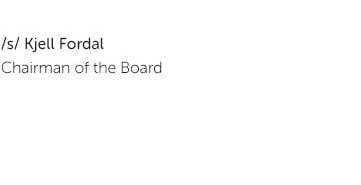

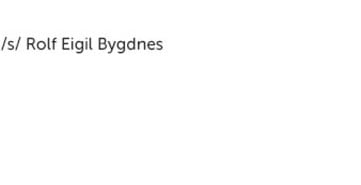

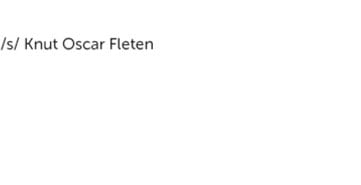

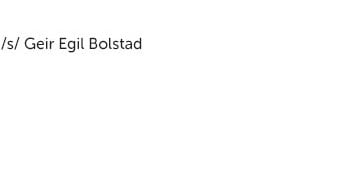



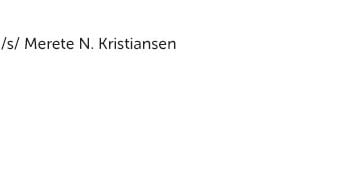

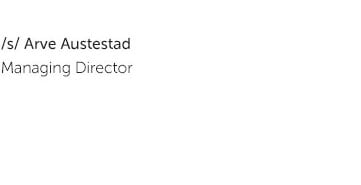
SpareBank 1 Boligkreditt AS
- Statement of the members of the board and the chief executive officer
The Board and the chief executive officer have today reviewed and approved the financial accounts for the second quarter 2018 for SpareBank 1 Boligkreditt AS. The quarterly accounts have been prepared in accordance with the International Financial Reporting Standards (IFRS), as adopted by the EU.
To the best knowledge of the board and the chief executive officer the accounts have been prepared in accordance with applicable accounting standards and give a true and fair view of the assets, liabilities, financial position and profit or loss of the company taken as a whole as of 30.06.18.
The board of directors and the chief executive officer declare to the best of their knowledge that the quarterly report gives a true and fair view of the development and performance of the business of the Company, as well as a description of the principal risks and uncertainties facing the Company.
Stavanger, 7. August 2018
The Board of Directors of SpareBank 1 Boligkreditt AS
